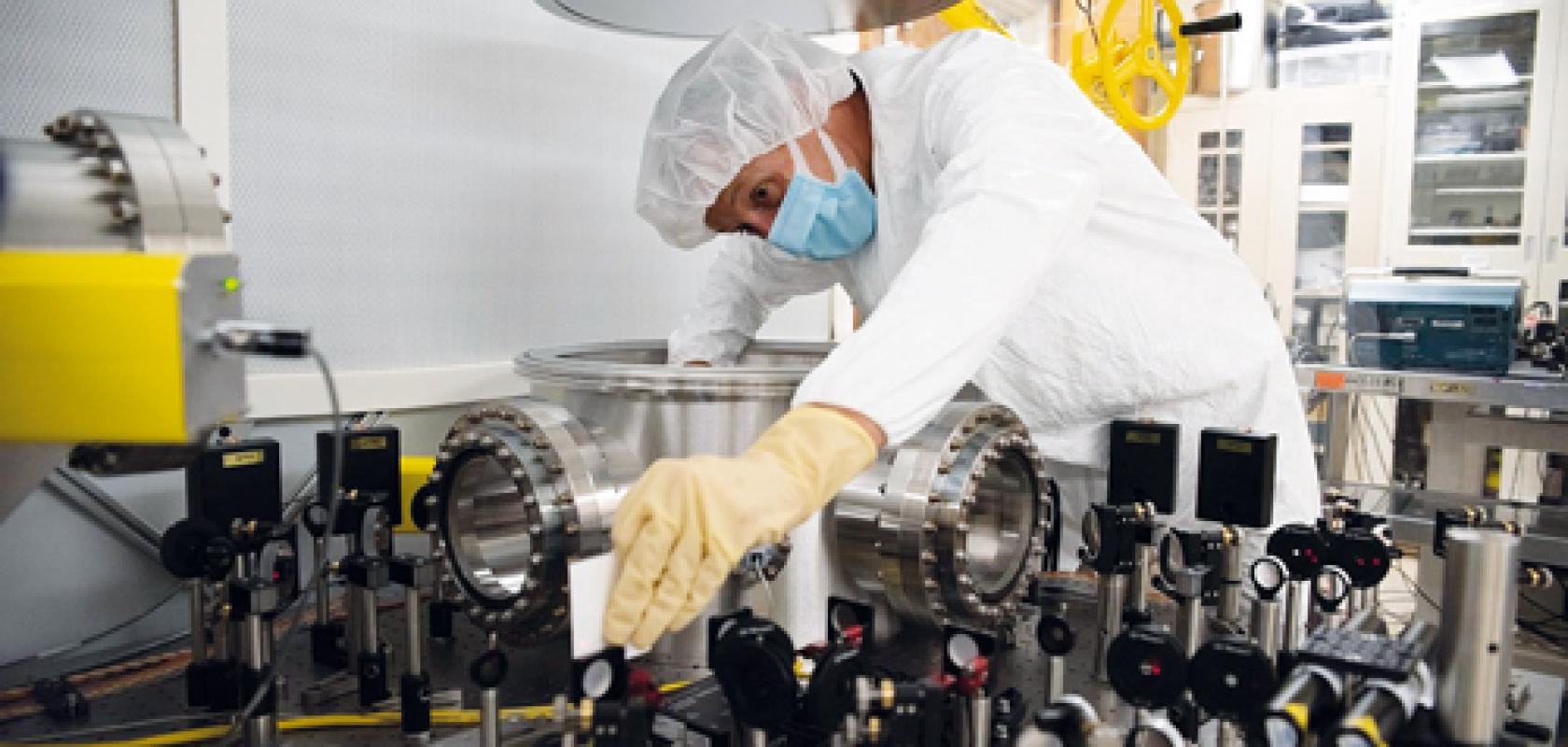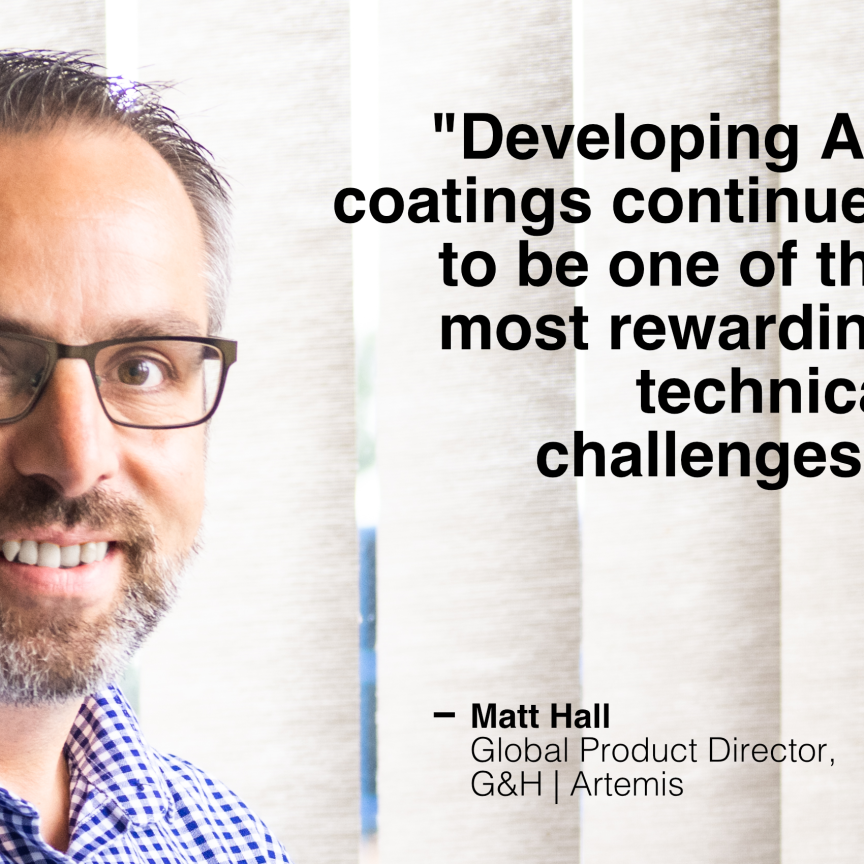In 2015, researchers at the LIGO laser interferometer succeeded in the first direct observation of gravitational waves, which had originally been predicted by Albert Einstein in 1916. The work was later rewarded with a Nobel Prize.
Since this groundbreaking detection, which observed gravitational waves produced by a pair of colliding black holes, the observatory, together with its European partner facility, Virgo, has detected dozens of similar cosmic rumblings that send ripples through space and time.
The detection of such cosmic events is only expected to increase in the future as more and more upgrades are made to the National Science Foundation-funded LIGO observatories in Hanford, Washington, and Livingston, Louisiana. These observations will help solve fundamental mysteries about the universe, such as how black holes form and where the building blocks of the universe originate from.
A significant contribution to the observation of these wave-like propagation of disturbances in space-time was provided by the laser mirrors of the kilometre-long LIGO interferometer assembly. Optimising these glass mirrors for extremely low optical absorption losses was a key advancement in realising the sensitivity necessary to make such measurements. This involved coating each 40kg mirror (there are four in each detector at the two LIGO observatories) with reflective materials, which is what enables them to reflect laser beams sensitive to passing gravitational waves.
‘Every time light passes between two different materials, a fraction of that light is reflected,’ explained Gabriele Vajente, LIGO senior research scientist at Caltech. ’This is the same thing that happens in your windows: you can see your faint reflection in the glass. By adding multiple layers of different materials, we can reinforce each reflection and make our mirrors up to 99.999 per cent reflective.’
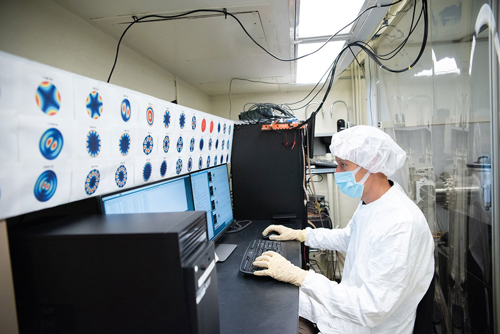
The disks used to test the coatings are placed inside a vacuum chamber to measure its mechanical properties and energy dissipation. The entire procedure takes a few hours to complete. The colourful images above the computer screens show some of the ways the disk can vibrate (Caltech)
Noisy coatings
LIGO is able to detect ripples in space-time using detectors known as interferometers. In this set-up, a powerful laser beam is split into two: each beam travels down one arm of a large L-shaped vacuum enclosure toward mirrors 4km away. The mirrors reflect the laser beams back to the source from which they originated. When gravitational waves pass by, they will stretch and squeeze space by nearly imperceptible and yet detectable amounts (much less than the width of a proton). The perturbations change the timing of the arrival of the two laser beams back at the source.
Generally, the more reflective the laser mirrors, the more sensitive the instrument, however, there is a catch. Any movement in the mirrors themselves - even the microscopic thermal vibrations of the atoms in their coatings - can affect the timing of the laser beams’ arrival and make it hard to isolate the gravitational-wave signals.
This is a problem LIGO scientists are facing: the coatings that make the mirrors reflective are also producing background noise in the instrument - noise that masks gravitational-wave signals of interest.
This noise, which the LIGO team describes as ’Brownian’ noise, comprises thermal motion originating from the elastic energy dissipation in the dielectric coatings used in the interferometer mirrors.
Combined with other sources of thermal noise, as well as quantum noise, this limits the sensitivity of current and future planned gravitational wave interferometric detectors - specifically in a critical frequency region of around 100Hz, according to the scientists.
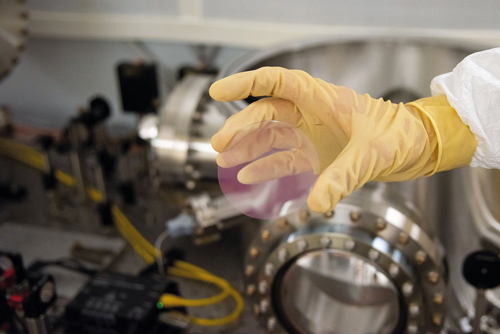
Researchers test coatings for the LIGO mirrors by depositing them on glass disks. The metal oxide coating on this disk has given it a pinkish hue (Caltech)
Cutting-edge optics development
Now, however, a study by the LIGO team describes a new type of mirror coating made of titanium oxide and germanium oxide, and outlines how it can reduce the level of background noise in LIGO’s mirrors by a factor of two. This would increase the volume of space that LIGO can probe by a factor of eight.
The research, which may have future applications in the fields of telecommunications and semiconductors, was a collaboration between Caltech, Colorado State University, the University of Montreal, and Stanford University - whose synchrotron at the SLAC National Accelerator Laboratory was used in the characterisation of the coatings.
‘We wanted to find a material at the edge of what is possible today,’ said Vajente, the lead author of a paper describing the work in the journal, Physical Review Letters. ’Our ability to study the astronomically large scale of the universe is limited by what happens in this very tiny microscopic space.’
He explained that what’s important about the new work is that he and his colleagues have developed a new way to better test different types of coating material: ‘We can now test the properties of a new material in about eight hours, completely automated, when before it took almost a week. This allowed us to explore the periodic table by trying a lot of different materials and a lot of combinations. Some of the materials we tried didn’t work, but this gave us insights into what properties might be important.’
In the end, the scientists discovered that a coating material made from a combination of titanium dioxide and germanium dioxide dissipated the least energy (the equivalent of reducing thermal vibrations).

A view of the measurement system from one of the vacuum chamber windows. The red dots are produced by the probe laser beam (Caltech)
‘We have identified mixtures of titanium dioxide (TiO2) and germanium dioxide (GeO2) that show internal dissipations at a level of 1 \'d7 10-4, low enough to provide improvement of almost a factor of two on the level of Brownian noise with respect to the state-of-the-art materials,’ they explain in the journal paper. ‘We show that by using a mixture of 44 per cent TiO2 and 56 per cent GeO2 in the high refractive index layers of the interferometer mirrors, it would be possible to achieve a thermal noise level in line with the design requirements. These results are a crucial step forward to produce the mirrors needed to meet the thermal noise requirements for the planned upgrades of the LIGO and Virgo detectors.’
‘With these new coatings, we expect to increase the detection rate of gravitational waves from once a week to once a day or more,’ added David Reitze, executive director of LIGO Laboratory at Caltech.
The fabrication process of the new coating had to be tailored to meet stringent demands in optical quality to effectively reduce thermal noise. Colorado State scientists therefore used a method called ion beam sputtering to coat the mirrors. In this process, atoms of titanium and germanium are peeled away from a source, combined with oxygen, and then deposited onto the glass to create thin layers of atoms.
‘This is a great example of how LIGO relies heavily on cutting-edge optics and materials science research and development,’ remarked Reitze.
The new coating may be used for LIGO's fifth observing run, which will begin in the middle of the decade as part of the Advanced LIGO Plus programme. Meanwhile, LIGO’s fourth observing run, the last in the Advanced LIGO campaign, is expected to commence in the summer of 2022.
The Physical Review Letters study, ‘Low Mechanical Loss TiO₂:GeO Coatings for Reduced Thermal Noise in Gravitational Wave Interferometers,’ (doi.org/10.1103/ PhysRevLett.127.071101) was funded by the NSF and the Gordon and Betty Moore Foundation.
Silicon coating optimises ultrafast laser optics
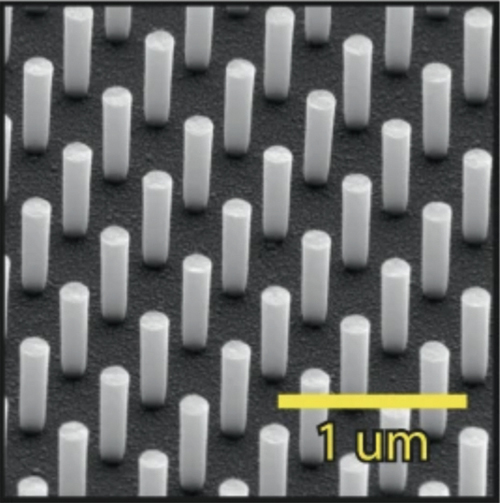
A view of the measurement system from one of the vacuum chamber windows. The red dots are produced by the probe laser beam (Harvard SEAS)
The light from ultrashort lasers - pulses ranging from picoseconds to femtoseconds in duration - are used in a wide range of modern applications. For example, these pulses allow scientists to observe chemical reactions in real time, image delicate biological samples, build precise nanostructures, and send long-distance, high-bitrate optical communications.
However, any application using ultrashort laser pulses with wavelengths in the visible spectrum must overcome a fundamental challenge - that red light travels faster than blue light through transparent materials such as glass. This means that when an ultrashort laser pulse passes through a glass lens, the tightly packed wavelengths of light separate, which destroys the usefulness of the beam.
This chromatic dispersion problem has plagued optical researchers for decades, and is usually addressed through the use of additional components that increase the size and bulk of optical devices. Now however, researchers at the Harvard John A. Paulson School of Engineering and Applied Sciences (SEAS) have developed a silicon coating that, when applied to the surface of a glass lens, can counteract the effects of dispersion. The research is published in Nature Communications (doi.org/10.1038/s41467-021-26920-6).
‘Our flexible approach can be rapidly implemented in conventional optics and optical set-ups and be adapted to different spectral regions and applications,’ said Federico Capasso, professor of applied physics and senior research fellow in Electrical Engineering at SEAS, and senior author of the study. The ultra-thin coating uses precisely designed silicon nanopillars that briefly capture and hold red light before re-emitting it. This temporary hold allows the slower-moving blue light to catch up. The coating therefore acts as an ultrashort laser pulse compressor, which in tests was used by the researchers to shorten laser pulses to only a couple of femtoseconds.
‘Our coating counteracts the dispersive effects of transparent materials, acting as a speed bump for red light and averaging out the speed of each wavelength of light,’ confirmed Marcus Ossiander, a postdoctoral research fellow at SEAS and first author of the paper.
The nanopillar silicon coating was made using the same commercial lithography tools as industrial semiconductors, making it easy to quickly apply these coatings to existing optical components and expand the applicability of femtosecond laser pulses.
‘Now, anyone can buy a lens, put the coating on and use the lens without worrying about dispersion,’ said Ossiander. ‘We see this technique as enabling technology to allow engineers and scientists of all specialties to apply ultrashort laser pulses without the technological difficulties that currently limit their applicability. This approach can be the basis for an array of anti- or non-dispersive optics.’
When asked whether there was any further research to be done before the coatings were ready to use, Ossiander told Electro Optics that while the current coating is indeed ready, he and his colleagues will be continually working on creating additional coatings for ever-shorter laser pulses.
The researchers have no plans to commercialise the new coating, and so therefore it has not been patented. The scientists instead hope for it to be adopted by a larger manufacturer. Therefore, for photonics engineers looking to work with the coating in the short term, they are recommended to approach the researchers directly.
The research was supported in part by the Office of Naval Research (ONR), by the Air Force Office of Scientific Research (AFOSR), and the Center for Nanoscale Systems (CNS).
How a new spectroradiometer drastically improved filter quality
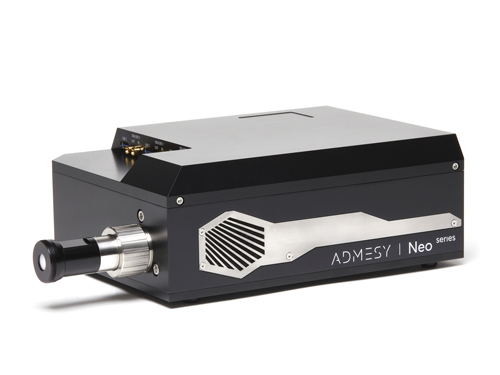
Admesy’s Neo spectroradiometer platform helped CEC to improve the accuracy of demanding filter coatings
Together with partner CEC (Cutting-Edge-Coatings GmbH) Admesy helped to improve the accuracy of demanding filter coatings deposited by its ion beam sputtering machine by a large margin
Spectroradiometers, colorimeters and light meters are used in large volume 24/7 production testing, as well as in smaller volume niche system manufacturers. One example is the successful cooperation now started between Admesy and Cutting Edge Coatings GmbH (CEC).
CEC is a spin-off company of world-renowned Laser Zentrum Hannover, Germany. Since 2007, CEC focuses on developing ion beam sputtering (IBS) deposition systems.
CEC’s Navigator IBS deposition system is designed to achieve the highest quality coating processes, ranging from high performance coating equipment for R&D, to high capacity coating machines for industrial mass production, and covering optical wavelengths from deep ultraviolet and visible to infrared. Combining 30 years of IBS coating experience from Laser Zentrum Hannover and CEC, the Navigator IBS system can produce coatings for very high performance laser components and various optical filters, such as HR coating, AR coating, complex filters and different kinds of other coatings.
A key advantage of CEC’s IBS coating systems is a spectral thin film thickness control system, called broad-band optical monitoring (BBOM). This system relies on spectral transmission measurements to monitor and control the process in real time.
Manufacturing interference filters
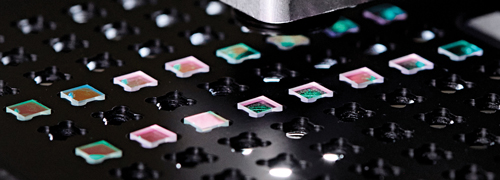
The deposition of the correct thickness of each layer is essential to achieve a high accuracy of the final filter
Highly accurate interference filters, such as those used in the Admesy Prometheus colorimeter series, are produced by applying alternating thin-film layers of oxide materials onto a transparent wafer substrate. These alternating thin-film layers have high and low refractive indices. A cleverly designed software algorithm puts the Fresnel equations to practice and will calculate an optimal receipt for these layers. The algorithm optimises the receipt to realise the target filter characteristics defined by the user.
The deposition of the correct thickness of each layer is essential to achieve a high accuracy of the final filter. With CEC’s IBS coating system the layers are applied in atomic layers. This process takes several hours and needs to be controlled constantly. Here the aforementioned BBOM system comes into play.
Excellent linearity
At the beginning, a baseline measurement is carried out without any thin-film layers applied. Then, during the growth of the thin layers, the change in transmission needs to be determined continuously. These measurements serve a double function.
First, the thickness of the current layer built up is calculated. This is possible because the transmission is a material related constant. In that way the process is monitored. Nonetheless, the actual layer thickness can vary slightly from the calculated target thickness. This is due to slight, but unavoidable, inhomogeneities in the layer material, which have an effect on the material constants. As the amount and type of contamination is not known this would negatively affect the final filter performance.
To counteract those small unwanted deviations, the filter receipt is dynamically optimised, so that subsequent layers will take care of, and correct for, the actual conditions. This is the second reason why accurate spectral measurements are key to realising the highest possible filter quality.
The accuracy and the repeatability of the spectroradiometer has a direct influence on the final quality achieved. Besides a perfect dark current and wavelength calibration, the linearity of the spectroradiometer is especially a key factor here.
The reason is that during the coating run the absolute transmittance of the layer stack - the filter in the making - will continuously change with each layer applied. Therefore, it is important to have a reliable and predictable linear response from the spectrometer, even at low transmission values. Otherwise change in transmittance will result in higher uncertainties of the measurements, which in turn will influence the accuracy of the calculated layer thicknesses.
Introducing the Admesy Neo series spectroradiometer platform
When CEC started to work together with Admesy, a solution to this challenge was found in using the new Neo spectroradiometer platform. The filters produced meet much tighter tolerances now. Neo’s well thought-out optical and mechanical construction assures the highest optical performance for this and similar applications. The unique industrial-robust coupler and the supplied SDK make hardware and software integration into commercial solutions like the CEC coating machine a breeze.
Need more help in selecting the right spectroradiometer?
Get in touch with the experts at Admesy: info@admesy.com, +31 475 600232

